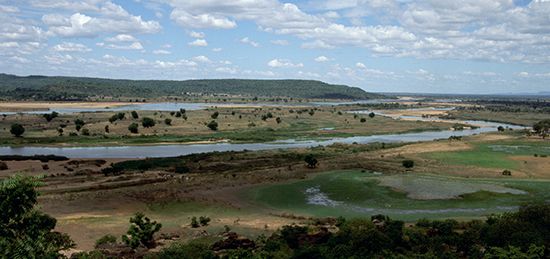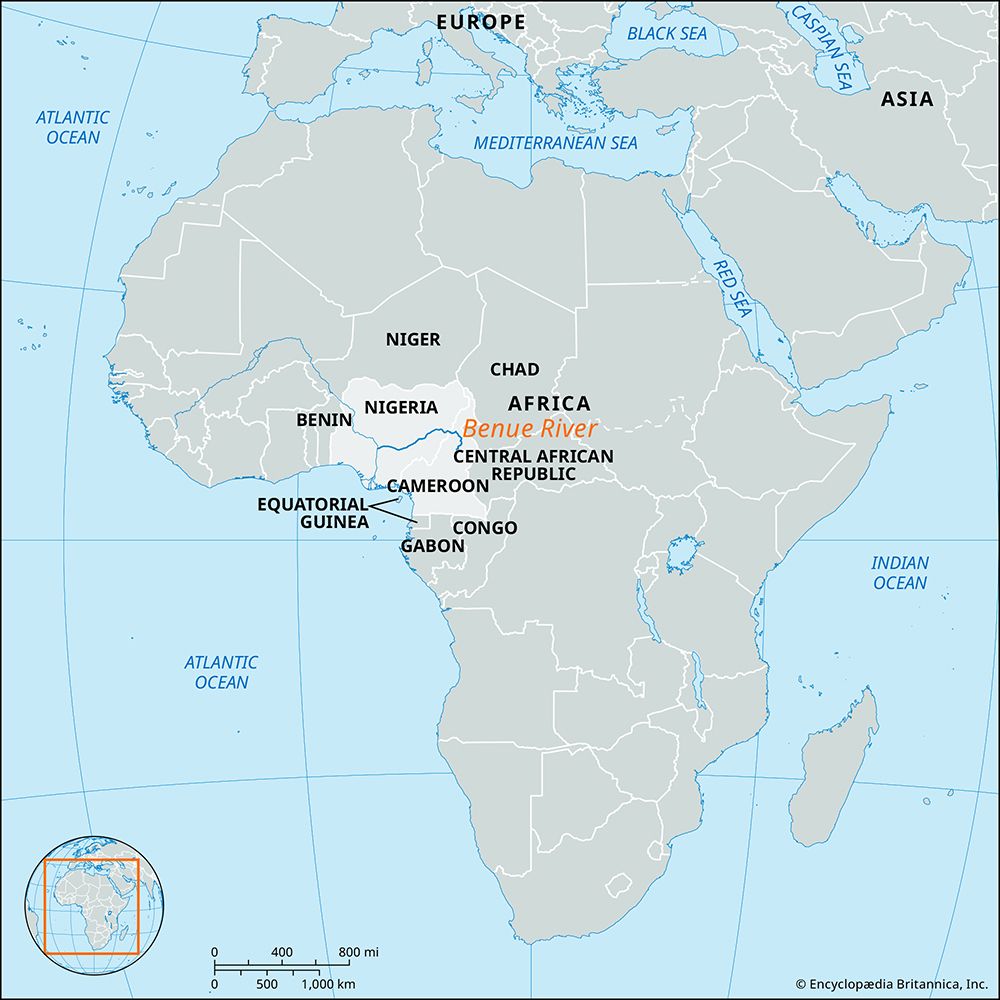Benue River
- Also spelled:
- Bénoué
Benue River, river in western Africa, longest tributary of the Niger, about 673 miles (1,083 km) in length. It rises in northern Cameroon as the Bénoué at about 4,400 feet (1,340 metres) and, in its first 150 miles (240 km), descends more than 2,000 feet (600 metres) over many falls and rapids, the rest of its course being largely uninterrupted. During flood periods its waters are linked via the Mayo-Kebbi tributary with the Logone, which flows into Lake Chad. Below the Mayo-Kebbi the river is navigable all year by boats drawing less than 2.5 feet (0.75 metres) and by larger boats for more restricted periods. A considerable volume of imports (particularly petroleum) is transported by river, and cotton and peanuts (groundnuts) are exported in the same way from the Chad region. Between Yola and Makurdi the Benue is joined by the Gongola, and it then flows east and south for about 300 miles (480 km).
A sandbar crosses the Benue at its confluence with the Niger, allowing only about 2 feet (0.6 metres) of water when the flow is minimal. River traffic moving upstream from the delta is frequently delayed at Lokoja, Nigeria, waiting for a sufficient depth of water, and is obliged to return before the level falls too low.
















